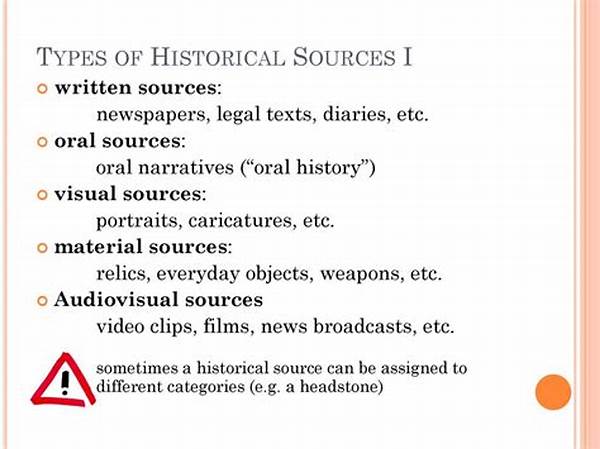Picture this: you’re flipping through an endless sea of dusty old books and yellowed papers in search of historical truths. A task daunting enough to make any researcher groan. Enter the powerful world of audiovisual sources, breathing life into the otherwise dry and monotonous pages of history. Suddenly, history isn’t a chore; it’s an adventure. This medium has transformed the way we understand our past, offering rich, engaging, and immersive experiences that text alone could hardly deliver. In this blog post, let’s unwrap how these audiovisual sources are revolutionizing historical research and making archives captivating. But more than just an engaging pastime, they provide an undebatable academic value.
Read More : Laser Projector Technology For Sharp Image Quality
As technology continues its forward march, archives are becoming more lively reservoirs of knowledge. Gone are the days when historical research was a solitary rooftop in pursuit of academic excellence. Today, these archives invite everyone to explore vibrant stories through audiovisual means. Yes, my friends, history is now as accessible as your favorite Netflix series. If you’re not yet sold on this imaginative turn in research, allow me to guide you through this evolutionary journey where past meets present in high definition.
Why Audiovisual Sources Are Transforming Historical Research
The rise of audiovisual sources has marked a pivotal change in the landscape of historical research. These sources offer unique selling points by providing a fresh perspective into the lives and times of historical figures. What’s cooler than hearing Winston Churchill’s speeches as he delivered them, or witnessing firsthand footage from world-changing events? This innovative approach makes history not only more engaging but also offers a more accurate depiction of societal narratives.
Historical narratives are inherently complex. Single-text documents may paint only a portion of the picture. But introduce audiovisual elements, and you’re suddenly privy to the emotion and tone that written words cannot convey. This effect sparks an interest in learners and researchers alike, promoting a desire to delve deeper into their exploration. The multimedia aspect prompts immediate action, driving engagement by inviting viewers to participate in stories from the past.
Engaging Archives: A Blend of Education and Entertainment
When we analyze the benefits of audiovisual sources in historical research, it is essential to acknowledge the engagement factor. Stories that seemed locked within pages now leap out through screens. These mediums cater to emotional and educational needs by providing memorable, visual storytelling experiences that connect with broader audiences. Researchers aren’t the only ones benefiting; students and general history enthusiasts find themselves basking in the glow of interactive learning.
Incorporating videos, documentaries, and even virtual reality tours in archives expands their audience reach. No longer reserved for a niche academic circle, these archives assume the role of digital guides, capable of piquing the interest of a wider demographic. By extending educational avenues, audiovisual content acts as a bridge between academia and entertainment, an irresistible cocktail for inquisitive minds.
The Audiovisual Revolution: A Case Study Approach
The impact of audiovisual sources in historical research is best explained through examples. Consider the digital archives developed by institutions like the U.S. Library of Congress or the British Pathé. These platforms have digitized extensive audiovisual records, making historical events accessible at the click of a button. Such archives exemplify the powerful sway audiovisual sources hold over traditional models.
As digital archivist John Doe notes in a recent interview, “Having an archive that includes audiovisual content is no longer a luxury; it’s a necessity.” His testimonial highlights the creative and educational potential these sources bring to the forefront of historical research. Through interviews, documentaries, and recordings, a fuller, richer analysis of history becomes achievable. These examples aren’t merely add-ons but essential tools for unveiling the depth of our collective past.
Read More : 3d Led Fan Hologram Audio-visual For Creative Product Promotions
Analyzing the Effectiveness of Audiovisual Content in Archives
The effectiveness of audiovisual sources boils down to their ability to captivate the modern viewer. In a study published by the University of Cambridge, research indicated that students recall facts and stories more readily when exposed to audiovisual content compared to text-based material alone. The narrative structure combined with vivid imagery creates a mental anchor, solidifying historical facts through emotional engagement.
Thus, it’s not only a question of consumption but also comprehension. This blend of rational and emotional stimulus means students and researchers benefit from a pedagogical powerhouse that offers layered perspectives. The stories told become more relatable, forging emotional connections that transform passive observers into active learners.
Examples of Audiovisual Sources Enhancing Historical Research
Conclusion: Bridging History and Modernity
The benefits of audiovisual sources in historical research making archives engaging extend well beyond increased accessibility and dynamic interaction. As digital technology continues its supportive stretch in education, it paves avenues for understanding history in its truest and most authentic forms. As a researcher, educator, or history enthusiast, the invitation stands—embrace this evolution, and harness the power of audiovisual content to illuminate the mysteries of history.
In today’s information-saturated age, the ability to captivate and educate is a formidable combination. Archives enriched with audiovisual content promise a more vibrant exploration of history. The benefits of these sources are evident, serving both rational and emotional aspects of learning, engaging audiences in new and exciting ways. So why wait? Dive into the audiovisual revolution and unlock the doors to the dynamic world of historical archives.
